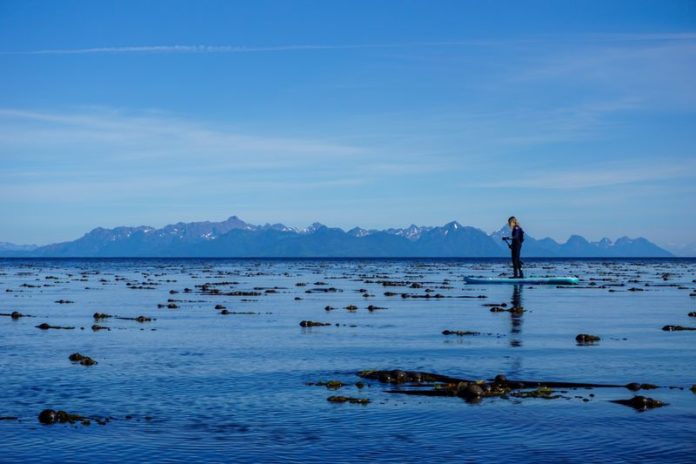
An international marine conservation nonprofit announced this week that it has named Prince William Sound as a critical environmental location, but the designation’s implications are causing concern among some in the commercial fishing industry.
The Mission Blue nonprofit identifies areas, called Hope Spots, that the organization deems are scientifically critical to the greater health of the oceans. Prince William Sound is the first area to receive such recognition in Alaska.
The organization’s mission is to expand existing Hope Spots in order to achieve the goal of protecting 30% of the oceans by 2030. According to the webpage, these areas allow Mission Blue to “… plan for the future and look beyond current marine protected areas, which are like national parks on land where exploitative uses like fishing and deep sea mining are restricted.”
But this has caused unease amongst some commercial fishermen.
Jess Rude, the executive director of Cordova District Fishermen United (CDFU), said members have approached her with concerns over the larger implications of the designation.
“CDFU appreciates PWS Stewardship Foundation’s on-the-ground efforts devoted to protecting and promoting this incredible place we get to call home,” Rude said. “Environmental concerns should be put first, but not at costs to everyday Alaskans that one-size-fits-all Lower 48 conservation groups don’t understand.”
Charla Hughes, executive director of the Prince William Sound Stewardship Foundation (PWSSF) said that the board discussed the idea for the area to be recognized last year. After collaborating with the Georgia Aquarium, which has helped other spots become recognized, they completed an application for nomination — which emphasized the Sound’s significant historical, cultural and spiritual value. Hughes said that being named the first Hope Spot in Alaska is an exciting opportunity.
“It’s an honor to be recognized in this way, it’s the beginning. It opens the door for so many possibilities for greater collaboration around the state,” she said, adding that “this is an honorary designation, not a regulatory one.”
PWSSF hopes to highlight the Sound and the existing stewardship taking place there through this new designation. Stewardship efforts include cleaning of marine debris on shorelines, mitigating invasive species such as European black slugs, and trail improvement projects. PWSSF is a 501(c)(3) nonprofit currently working with a variety of partner organizations around the region to complete these projects — including the Chugach National Forest, the Chugach Regional Resources Commission, and the Gulf of Alaska Keeper. Hughes said that the organization hopes that Mission Blue’s designation will help highlight and fund this work through amplifying outreach and grant opportunities.
“Right now our idea is to support a lot of our existing stewardship projects and engage more people. From there, as greater collaboration becomes possible, we’re excited to see what other kinds of stewardship opportunities are possible,” Hughes said.
The Prince William Sound is the newest addition to a roster of 157 other Hope Spots around the world. Mission Blue implements communications campaigns that elevate Hope Spots to the world stage through documentaries, social media, traditional media, and interactive mapping tools like Esri ArcGIS.
According to Rude, Prince William Sound is an example of how fishermen can coexist with healthy oceans. She said CDFU hopes that Mission Blue will consider the full history of the Sound, including the commercial fishing community’s contributions to conservation.
“We have a history of working proactively with management and science to report marine observations, and of demanding better from the oil industry to help create and participate in safety protections for oil transportation,” Rude said.
Hughes said that PWSSF supports diverse user groups in the Sound and that stewards of the area include anyone who lives near, works with, or enjoys the waters of Prince William Sound.
“This is about collaboration and support,” Hughes said. “All the projects that the stewardship foundation does are investments in regional communities and regional economies, and that includes recreation and fishing.”
As for the possibility of a future marine protected area, Hughes said it hasn’t been discussed as a part of the designation.
“That would be a community conversion,” she said.
Hughes said that this winter will serve as a planning period for the PWSSF and its collaborators before moving forward with expanded outreach. She encourages anyone interested in PWSSF’s work to visit their website at https://www.princewilliamsound.org/.














